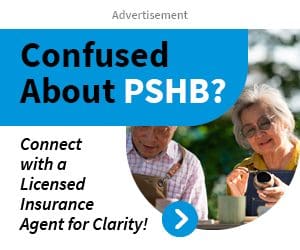Key Takeaways
-
USPS employees and retirees are now part of the new Postal Service Health Benefits (PSHB) Program, which replaced FEHB starting January 1, 2025.
-
Understanding the differences in enrollment requirements, Medicare integration, and prescription coverage is essential for making informed decisions.
A Big Change for USPS Health Coverage
If you’ve been with the USPS for a while, chances are you’ve become familiar with the Federal Employees Health Benefits (FEHB) Program. For decades, FEHB was your go-to for health insurance. But starting in 2025, that changes. USPS employees and annuitants are now covered under the Postal Service Health Benefits (PSHB) Program. This shift isn’t just a rebranding — it comes with new rules, timelines, and responsibilities.
Why the Switch Happened
Congress mandated the PSHB Program as part of the Postal Service Reform Act. The goal? Create a health benefits system specifically tailored for postal workers and retirees, reducing costs and improving alignment with Medicare for those eligible. FEHB no longer applies to USPS employees and retirees, unless they’re covered as a dependent under another federal employee’s plan.
Who the Change Affects
This shift impacts:
-
Current USPS employees
-
USPS retirees
-
Eligible family members covered under USPS plans
You’re now required to be in a PSHB plan to maintain your health benefits through USPS. If you’ve retired or will retire soon, your annuitant status doesn’t exempt you from this change.
Enrollment: Not Automatic for Everyone
Many USPS annuitants were automatically enrolled in a comparable PSHB plan at the start of 2025. However, this auto-enrollment applies only if you were already enrolled in FEHB and didn’t actively select a different PSHB plan during Open Season, which ran from November to December 2024.
Active employees also had to use LiteBlue to review and select their new PSHB plan. If you didn’t take any action, you may have been auto-enrolled — but it’s still critical to confirm your current plan and its benefits.
Timeline to Remember
-
April 1 to September 30, 2024: Special Enrollment Period (SEP) for Medicare Part B began for certain USPS annuitants.
-
November to December 2024: Open Season for selecting your 2025 PSHB plan.
-
January 1, 2025: PSHB officially replaced FEHB for USPS employees and annuitants.
If you missed Open Season and didn’t qualify for SEP, your options for making changes are now limited to qualifying life events.
Medicare Part B and Your New Health Coverage
One of the biggest differences with PSHB is its required integration with Medicare Part B. If you are a Medicare-eligible annuitant or family member, you are required to enroll in Part B to stay in a PSHB plan — unless you meet one of the following exceptions:
-
You retired on or before January 1, 2025, and are not already enrolled in Medicare Part B
-
You were age 64 or older as of January 1, 2025
-
You live abroad or receive health benefits from the VA or Indian Health Services
If you fall under these categories, you are exempt from the mandatory Medicare Part B enrollment. Otherwise, opting out of Part B now could jeopardize your future PSHB coverage.
What About Your Prescription Coverage?
Prescription drug benefits under PSHB are now integrated with Medicare Part D through an Employer Group Waiver Plan (EGWP). If you’re enrolled in Medicare Part A and B and keep your PSHB plan, you are automatically enrolled in this Part D plan.
This integrated drug coverage includes:
-
An annual $2,000 out-of-pocket cap for prescriptions
-
A $35 monthly cap on insulin
-
A broader pharmacy network than previous offerings
If you decline the integrated Part D coverage, you lose drug benefits under PSHB. Re-enrollment later is only allowed under certain circumstances.
Financial Impact: Costs and Contributions
PSHB premiums generally follow the same formula as FEHB: USPS pays about 70% of the total premium, and you cover the rest. However, exact premiums and out-of-pocket costs can vary from plan to plan. While some costs have remained stable, others — like deductibles or coinsurance — may be different compared to FEHB.
Some annuitants may notice changes in their monthly contributions. For 2025, annuitant premium shares typically range as follows:
-
Self Only: Around $241/month
-
Self Plus One: Around $521/month
-
Self and Family: Around $567/month
Exact numbers depend on your chosen plan. Be sure to review the PSHB brochures for details.
Coordinating PSHB with Other Benefits
Your switch to PSHB doesn’t affect your other federal benefits:
-
FEDVIP (Dental and Vision): No changes
-
FEGLI (Life Insurance): No changes
-
FLTCIP (Long-Term Care): No changes
-
FSAFEDS: Still available for eligible employees (not retirees)
But be aware: FEHB is no longer your fallback. If you leave or lose PSHB coverage, you’ll need other options, such as Medicare only, or private insurance if eligible.
What You Need to Do Now
To ensure your health benefits remain active and aligned with your needs:
-
Confirm your current PSHB plan: Log into your LiteBlue or KeepingPosted account to review your coverage.
-
Enroll in Medicare Part B if required: Avoid late enrollment penalties and potential PSHB disqualification.
-
Review your drug coverage status: Don’t unintentionally opt out of integrated Medicare Part D.
-
Compare costs: Deductibles, coinsurance, and copayments may differ from your old FEHB plan.
Planning Ahead for the Next Open Season
Even if you’re already enrolled in a PSHB plan for 2025, Open Season happens every year from November to December. This is your opportunity to:
-
Switch plans if your needs have changed
-
Add or remove dependents
-
Adjust based on new plan options or benefits
Don’t assume your plan stays the same — always review what’s available before the next calendar year.
Where to Get Help
Understanding the shift from FEHB to PSHB can be complex. The following resources are available:
-
USPS HR Shared Services
-
OPM’s official PSHB information page
-
PSHB Navigator Help Line: 1-833-712-7742
Also, consider speaking with a licensed agent who can help you assess your specific situation and determine the best path forward.
USPS Health Benefits Are Changing—Be Ready
Transitioning from FEHB to PSHB is a major milestone for USPS employees and retirees. With new rules on Medicare enrollment, drug coverage, and plan choices, it’s essential to stay informed and proactive. Don’t wait for Open Season to make sense of your plan — now’s the time to double-check that you’re on track.
For questions about your options, Medicare requirements, or future enrollment periods, speak with a licensed agent listed on this website for guidance tailored to your situation.











